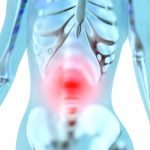AUDIENCE
Naturopathic Doctor News & Review (NDNR) serves as a dynamic voice for the advancement of naturopathic medicine while promoting personal and professional development for practicing NDs. Our primary audience is licensed naturopathic physicians and includes: graduates and students of CNME‐approved naturopathic medical colleges in the United States and Canada; manufacturers, distributors, retailers, and researchers of the nutraceutical and natural products industries; and patients and advocates of naturopathic medicine.
EDITORIAL CONTENT & AUTHORSHIP
Contributed articles must be original, previously unpublished, and written by physicians with a naturopathic degree from a CNME‐accredited institution:
• BINM, Vancouver BC
• CCNM, Toronto, ON
• University of Bridgeport College of Naturopathic Medicine, Bridgeport, CT
• Bastyr University, Seattle, WA
• Bastyr University, San Diego, CA
• NCNM, Portland, OR
• SCNM, Tempe, AZ
• NUHS, Lombard, IL
Qualified, contributing authors who are published in NDNR have the opportunity to receive Continuing Medical Education credits (CMEs) for their written submissions. For example, in Arizona and Oregon:
• Arizona—A maximum of four credit hours may be claimed for preparing or writing for presentation or publication, a medically related paper, report, or book that is presented or published addressing current developments, skills, procedures, or treatment in the practice of naturopathic medicine. See http://aznd.gov/pdf/Rules.pdf for more details.
• Oregon—Credit may be given for being an author of an article related to naturopathic medicine in a professional publication or book. The length of the article and the complexity of its content determine the credit amount. Credit for such activities will be credited in the year the project is completed, with no more than 15 hours credited for each original publication. See http://www.oregon.gov/OBNE/rules/850‐040‐0210.CE.pdf for more details.
TOPIC REQUIREMENTS
Rather than general overviews, articles must cover a specific topic, protocol, modality, diagnostic approach, philosophy, commentary, or case study pertaining to naturopathic medicine. Illustrations, photographs, charts, and protocols are encouraged and are a great “value‐add” to your article. Mentions of and/or references to animal studies are not allowed where human studies are available.
Please note: ND News & Review does not reprint articles from other publications except under unusual circumstances.
Topic areas may include:
• Clinical research and observation
• Naturopathic philosophy
• Clinical pearls and interesting cases—case studies
• Practice building and business management
• Development of new techniques or protocols
• Abstracts and reviews
• Discussions pertaining to diagnostics
• Public/media relations and networking
• Technologies that make practices more efficient and profitable
• Current trends and issues that affect naturopathic physicians in your area
• News, announcements, and event notices
• Educational and grassroots programs that further the naturopathic cause
• Any other trend, event, or development you believe is pertinent to the profession
Manuscript types that WILL NOT be accepted:
• Articles that are overly general
• Articles that appear to name, promote, or advertise a specific product, service, service provider, or company.
MANUSCRIPT PREPARATION
File Prep & Requirements:
- Word count: 1500-2000 words per article
- Formatting: Use NO special formatting. Please use Times or Times New Roman, size 10 font, and 1-inch margins, submit in doc format. Use no footers or headers.
- Graphics: All illustrations, charts, graphs, and photo images, including your own headshot for your bio, must be at least 300 dpi resolution; we cannot accept files that are 72 dpi. A guideline for a good physical size is roughly 3″ X 5″; this size enables us to enlarge or reduce the image as needed to fit. Please provide all image files as separate jpg or tiff files. Please do not embed any photos or illustrations within your Word document, as we will not be able to export them to proper print quality.
- Personal bio: Please include your bio (70-100 words, maximum) at the end of your article document.
References & Permissions:
- Images: For borrowed images, authors are required to secure any copyright permissions in advance.
- Citations: References and appropriate citations are required for manuscript acceptance. Denote references by typing the numbers manually in the text, using superscript Arabic numerals. The reference list should manually be numbered in the order the references appear in the article.
- Do not use the MS Word automatic footnotes or Endnotes formatting tool. This can be helpful during the writing of an article, but please manually enter reference numbers before submitting.
- All citations must be provided in AMA style: Any article submitted without citations in proper form will be returned to the author for corrections prior to editing.
Example of a journal article citation:
Sanders ME, Guarner F, Guerrant R, et al. An update on the use and investigation of probiotics in health and disease. Gut. 2013;62(5):787-796.
If only 4 authors, list all 4. If more than 4, list 3 authors, plus “et al”. Italicize the journal name; do not include month; list full page numbers.
Example of a chapter within a book citation:
Mills S. Herbal medicine. In: Lewith G, Jonas WB, Walaach H, eds. Clinical Research in Complementary Therapies. Edinburgh, Scotland: Churchill Livingstone; 2002:211-227.
Please make sure to always include publisher and location, as illustrated.
Example of a web page citation:
National Center for Complementary and Alternative Medicine. St. John’s Wort and the treatment of depression [Web page]. National Institutes of Health Web site. http://nccam.nih.gov/health/stjohnswort/. Accessed May 13, 2013.
Access date always refers to the date that YOU checked it.
Here is a handy resource outlining AMA style, including specific examples of various types of citations: http://www.library.illinois.edu/learn/research/citation/ama.html
DEADLINES
Authors will be given a submission date. Submitting your article by this date gives us the time required to edit it. It also provides you an opportunity to review the edits, ask questions, and to clarify areas.
EDITORIAL CALENDAR
The editorial calendar is meant to be a loose guideline, as authors are encouraged to use professional and creative license to address topics relative to their views and philosophies of practice. Modalities may include, but are not limited to, nutraceuticals, pharmaceuticals, botanical medicine, homeopathy, nutrition, functional medicine, IV therapies, oxygen therapy, electro‐therapies, hydrotherapy, nature cure, naturopathic manipulation, physical medicine, acupuncture, TCM, mesotherapy, intradermal therapy, prolotherapy, neural therapy, minor surgery, biological medicine, and other modalities used in naturopathic medicine. Topics may be addressed as case studies, proposals, abstracts, reviews, commentaries and/or protocols. Preference is given to articles addressing a specific case or topic rather than a general overview. For example, “A Case Study and Follow‐Up of a 26‐Year‐Old Female with Multiple Miscarriage” or “Treatment of Luteal Phase Dysfunction in First Trimester Miscarriage” would be preferred to “Naturopathic Treatment of Miscarriage.”
| Month | Clinical Focus | Article Submission Deadlines |
| January | Gastrointestinal Health / Toxicology / Bariatric | September 15 |
| February | Endocrinology / Fertility | October 15 |
| March | Mental Health / Insomnia | November 15 |
| April | Autoimmune / Allergy | December 15 |
| May | Dermatology / Anti-Aging | January 15 |
| June | Mind-Body Medicine | February 15 |
| July | Neurology / Pain | March 15 |
| August | Pediatrics | April 15 |
| September | Geriatrics/ Infectious Diseases | May 15 |
| October | Cardiology / Pulmonology / Ophthalmology | June 15 |
| November | Men’s Health | July 15 |
| December | Women’s Health | August 15 |
EDITORIAL AND PUBLICATION PROCESS
Articles are reviewed and edited for accuracy, style, grammar, and space. We cannot promise publication in any specific issue. We may reserve an article for a more appropriate issue or to meet space requirements or may publish it as a website‐only feature.
Helpful Resources
- Website that delineates AMA style, including examples of AMA-style citations (also listed above): http://www.library.illinois.edu/learn/research/citation/ama.html
- Websites that provide assistance in building citations:
http://mickschroeder.com/citation/
http://www.bibme.org - Website that helps authors to understand plagiarism:
http://plagiarism.org
Editorial Discretion Disclaimer:
Although we make every effort to publish articles as promptly as possible, publication of an article can never be guaranteed. Promotion of products or services will be deleted in the editing process. Edited articles will not be provided to authors prior to publication. NDNR reserves the right to pull any copy if necessary to meet production requirements and deadlines.
Please direct any questions or comments concerning these guidelines to:
Managing Editor
Naturopathic Doctor News & Review
PO Box 2968, Scottsdale, AZ 85252
Phone: 888‐627‐8677
Fax: 480‐275‐7712
E‐mail: [email protected]






